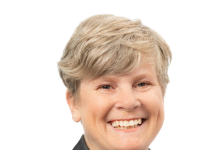People in more than 400 households will soon have better access to high-speed internet as 11 more rural Vancouver Island, northern and central coast communities get connected.
Projects will serve remote and rural communities, such as Oona River (northern coast), Echo Bay and Health Bay, including Gwayasdums 1 of the Kwikwasut’inuxw Haxwa’mis First Nation on Gilford Island (central coast), Firvale (Bella Coola valley) and Oclucje of Nuchatlaht First Nation on Vancouver Island. A total of seven last-mile projects will be built and operated by internet service provider CityWest.
“We’re helping people across the province to access employment, health care, education and training by partnering with service providers to bring fibre-to-home connectivity to rural, remote and Indigenous communities,” said Diana Gibson, Minister of Citizens’ Services. “With access to high-speed internet, people living in the north Island, central and northern coast regions will be able to fully participate in the digital world from their homes and communities.”
CityWest, in partnership with Strathcona Regional District, is also building a new fibre-transport link between Campbell River and Gold River. This project will enhance regional transport capacity, including capacity for the Connected Coast Network, which spans approximately 2,810 kilometres of fibre and landing sites on beaches along coastal B.C., providing improved connectivity for several coastal communities.
“Expanding connectivity means greater access to jobs, education and government services that people rely on,” said Tamara Davidson, MLA for North Coast-Haida Gwaii. “With improved access to high-speed internet, people can remain rooted in their home communities, while still accessing the services they need.”
The Province is investing more than $1 million through the Connecting Communities BC program, administered by the Ministry of Citizens’ Services. The Government of Canada is investing more than $1.25 million through its Universal Broadband Fund and CityWest will contribute more than $1 million. The First Nations Health Authority will also contribute approximately $224,000 toward projects in Health Bay (Kwikwasut’inuxw Haxwa’mis) and Echo Bay on Gilford Island and Tsatsisnukwomi Village on Harbledown Island, both located on the central coast.
Since 2017, the Province has invested $584 million to expand connectivity in British Columbia. In 2017, the federal government estimated 57% of homes in rural and remote areas and 66% of homes on First Nation reserves in B.C. had access to high-speed internet. As of January 2025, approximately 74% of rural homes and approximately 83% of homes on First Nations reserves had access to high-speed internet.
Quotes:
Buckley Belanger, federal Secretary of State (Rural Development) –
“Access to high-speed internet is about more than just getting online – it’s about being able to study, see a doctor virtually, run a business or connect with loved ones. These projects are going to make a real difference for people in rural communities and that’s why our government is committed to making sure every household in Canada, no matter where it’s located, has the reliable connection it needs.”
Spencer Chandra Herbert, Minister of Indigenous Relations and Reconciliation –
“By connecting rural and First Nations communities to high-speed internet, we also help the voices, ideas and passions of the people of the north Island, and north and central B.C. coast succeed in helping build a more prosperous and resilient B.C. that stands on its own two feet.”
Steve Morissette, parliamentary secretary for rural development –
“High-speed internet service is a game-changer for people living and working in rural and remote areas, enabling people to participate in the digital economy more fully and enjoy the many opportunities and services connectivity brings.”
Steve Emery, director, Electoral Area A, Central Coast Regional District –
“Reliable high-speed fibre internet in Ocean Falls and Martin Valley will be a game-changer. With this new infrastructure, remote work is now possible for residents – opening the door for newcomers and supporting economic opportunities in our region.”
Karl Bergman, director, Electoral Area C, North Coast Regional District –
“This investment is an important step forward in closing the connectivity gap for Oona River and similar remote communities. Reliable internet opens doors to education, health care and economic participation, but it’s only part of the solution. We’re deeply grateful for this support and we continue to advocate for reliable transportation infrastructure that ensures our communities are fully connected, both digitally and physically.”
Stefan Woloszyn, chief executive officer, CityWest –
“These projects are not just about providing internet, it’s about enriching lives, fostering inclusion, creating opportunities and driving positive change. We are excited to see these projects moving forward to bridge the digital divide in these communities. We would like to express our thanks to the Province of B.C., the federal government, the First Nations Health Authority and Northern Development Initiative Trust for their vision on ensuring that these communities are able to unlock their connectivity destiny.”
Ben Campbell, CEO, Northern Development Initiative Trust –
“At Northern Development Initiative Trust, we’re committed to strengthening northern B.C.’s rural development and fostering resilient communities. We’re pleased to see initiatives that expand connectivity in remote areas, ensuring more British Columbians have access to reliable high-speed internet.”



